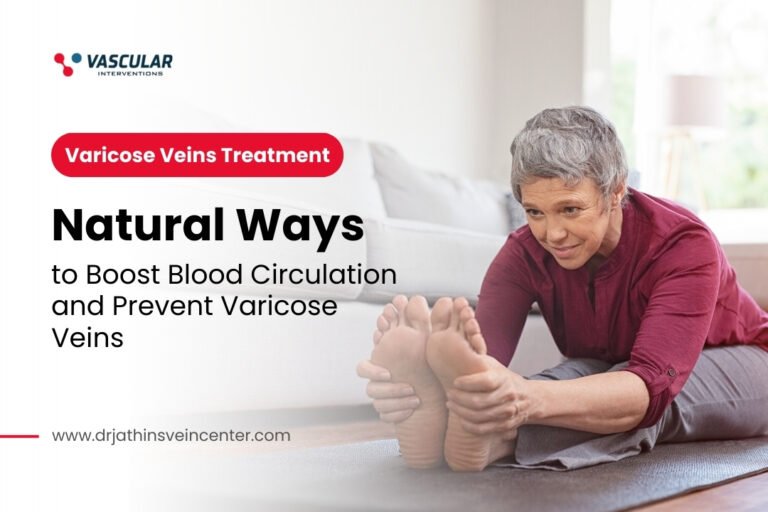Deep vein thrombosis (DVT) is a serious medical condition that occurs when a blood clot forms in one or more of the deep veins in the body, usually in the legs. If left untreated, it can lead to life-threatening complications such as pulmonary embolism. While medical intervention is crucial for DVT treatment, there are several natural remedies that can aid in the recovery process and prevent the condition from worsening.
In this blog post, we will discuss 5 effective natural remedies for deep vein thrombosis treatment at home. These remedies include exercise, massage, herbal supplements, hydration, and elevating legs. We will explore how each of these remedies can help alleviate symptoms, promote blood flow, and prevent the formation of new blood clots. It is important to note that natural remedies should always be used in conjunction with medical treatment, and should only be implemented under the guidance of a healthcare professional.
By incorporating these natural remedies into your DVT treatment plan, you can help support your recovery in a safe and effective way while also reducing any potential long-term complications associated with the disease.
1. Consider herbal supplements for prevention
Deep vein thrombosis is a serious condition that can lead to life-threatening complications if not treated promptly. While there are several medical treatments available for DVT, many people are interested in natural remedies that can help prevent or manage the condition.
One option to consider is herbal supplements. Certain herbs, such as ginger and turmeric, have anti-inflammatory properties that may help reduce blood clotting and improve circulation. However, it’s important to note that herbal supplements should never replace medical treatment and should only be used under the guidance of a healthcare professional. Additionally, some herbs can interact with certain medications or have side effects, so it’s essential to consult with a healthcare provider before using any herbal supplements for DVT prevention or treatment.
2. Elevate legs to improve circulation
Elevating legs is one of the most effective natural remedies for deep vein thrombosis treatment at home. Elevating legs above the heart level helps to improve blood circulation and reduce blood pooling in the legs. This, in turn, lowers the risk of blood clots formation in the veins. To do this, lie down and place pillows or cushions under your legs to elevate them above the heart level. You can also sit down and place your legs on an elevated surface, such as a chair or a footstool. It is recommended to elevate your legs for at least 15-20 minutes several times a day to achieve the best results. Elevating your legs is a simple and practical home remedy that can greatly benefit those with deep vein thrombosis and other conditions related to poor blood circulation.
3. Try massage to reduce inflammation
Massage is one of the five natural remedies for deep vein thrombosis treatment at home that can help reduce inflammation. Inflammation is a key factor in the development of deep vein thrombosis, and massage can be an effective way to reduce it. Massage helps to increase blood flow and improve circulation, which can help to reduce inflammation and swelling. It can also help to break up any clots that may be present, which can help to prevent the formation of new clots. However, it is important to note that massage should be done by a trained professional, and should not be performed on areas where a clot is already present, as this can increase the risk of the clot breaking loose and traveling to the lungs or other organs. If you are considering massage as a natural remedy for deep vein thrombosis, it is important to speak with your healthcare provider first to ensure that it is safe for you.
4. Stay active with safe exercises
The fourth natural remedy for deep vein thrombosis treatment at home is to stay active with safe exercises. Engaging in physical activity can help improve blood circulation and reduce the risk of blood clots. However, it’s important to note that not all exercises are safe for individuals with deep vein thrombosis.
High-impact activities such as running or jumping should be avoided as they can increase the risk of blood clots breaking loose and traveling to other parts of the body. Instead, low-impact exercises such as walking, cycling, or swimming are recommended. It’s also important to consult with a healthcare professional before starting any new exercise routine, especially if you have a history of deep vein thrombosis or other health conditions.
5. Stay hydrated to prevent clots
One of the most important natural remedies for deep vein thrombosis treatment at home is to stay hydrated. Dehydration can lead to the thickening of blood, which increases the risk of blood clots. Drinking plenty of fluids, especially water, helps to keep the blood flowing smoothly and prevents the formation of blood clots. It is recommended to drink at least 8-10 glasses of water per day to ensure adequate hydration.
Additionally, consuming fluids like herbal tea, coconut water, and fresh fruit juices can also help to keep the body hydrated. It is important to note that while staying hydrated is beneficial for preventing blood clots, it is not a substitute for medical treatment. Anyone with symptoms of deep vein thrombosis should seek medical attention immediately.
Conclusion
Deep vein thrombosis can be a serious condition with potentially life-threatening complications. While medical attention is necessary for proper diagnosis and treatment, natural remedies can be a helpful addition to a patient’s treatment plan. The remedies discussed in this post – exercise, massage, herbal supplements, hydration, and elevating legs – can help alleviate symptoms and reduce the risk of further complications.
However, it is important to consult with a healthcare professional before attempting any natural remedies, as they may interact with medications or exacerbate existing medical conditions.





